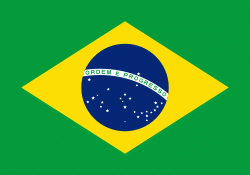Nova Friburgo (Nova Friburgo)
 |
The main economic activities are the undergarment industry, olericulture, goat raising, various industries (textile, clothing, metallurgy) and tourism. It is also the coldest city of the state.
Up to the 19th century, the region of the present Nova Friburgo was inhabited by Coroado Purí Indians. In 1818, King John VI was interested in improving the relationship with Germany, in order to obtain support against the French empire. He then proposed a planned settlement that would promote the civilization in Brazil. A royal decree of May 1818, authorized the Canton of Fribourg of Switzerland, to establish a colony of 100 Swiss families in the Morro Queimado Farm, in Cantagalo District, a place with climate and natural characteristics similar to those in their country.
Between 1819 and 1820, the region was settled by 265 Swiss families, in total 1,458 immigrants. It was named Nova Friburgo (New Fribourg) by the Swiss after the homeland of most of the families.
Following the Independence of Brazil in 1822, the Imperial Government continued the policy of populating the nation by attracting European colonization. Eighty German families previously assigned to settlements in the Province of Bahia, for unknown reasons ended up in Nova Friburgo, where they arrived on the 3 and 4 May 1824. Similar arrivals of Italians, Portuguese and a minority of Syrians led to such population increases that the once village was elevated to city status on 8 January 1890.
In 1872, the Baron of Nova Friburgo brought to the region the Leopoldina Railroad, to allow for the flow of the coffee from Cantagalo. Agriculture was the basis of economic activity until 1910, when the arrival of industrialists pioneered the development of an industrial sector still thriving to the present day. Of similar importance was the relative proximity to Niterói and Rio de Janeiro and the improvement of transport and communication links such as paved roads and telegraph. This encouraged a small tourist industry to grow, which, together with local commerce, became the main source of income for the city.
Nova Friburgo was affected by the 2011 Brazilian floods on 11 January with mudslides causing at least 820 deaths and more than 200 people to go missing in the biggest natural disaster in the history of Brazil. The population was left with no water, electricity, food or gas.
Map - Nova Friburgo (Nova Friburgo)
Map
Country - Brazil
Currency / Language
| ISO | Currency | Symbol | Significant figures |
|---|---|---|---|
| BRL | Brazilian real | R$ | 2 |
| ISO | Language |
|---|---|
| EN | English language |
| FR | French language |
| PT | Portuguese language |
| ES | Spanish language |

















